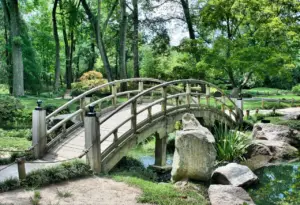Hokkaido, Japan’s northernmost island, is renowned for its stunning natural scenery and diverse wildlife. Hokkaido’s wildlife parks provide visitors with a unique opportunity to observe and learn about the island’s flora and fauna. These parks combine education, conservation, and entertainment, making them an excellent destination for families and nature enthusiasts alike.
Asahiyama Zoo, one of the most popular wildlife parks in Hokkaido, attracts visitors from all over the world. The zoo is famous for its innovative enclosures, which allow visitors to view the animals up close and personal. In addition to traditional zoo animals such as lions and tigers, Asahiyama Zoo is home to a variety of animals native to Hokkaido, such as Hokkaido brown bears and Ezo red foxes. The park also offers educational programs and interactive exhibits that teach visitors about the animals’ behaviors, habitats, and conservation efforts.
Hokkaido’s other wildlife parks, such as Shiretoko National Park and Akan International Crane Center, offer similar experiences and opportunities for visitors to learn about and appreciate Hokkaido’s unique wildlife.
Key Takeaways
- Hokkaido’s wildlife parks offer a variety of animal species and habitats that replicate natural environments, providing visitors an opportunity to observe natural behaviors and appreciate the animals’ importance in the ecosystem.
- Accommodations range from campsites to luxury hotels, and transportation options include renting a car, taking public transportation, or joining a guided tour.
- Visitors should adhere to park rules and safety guidelines, including not feeding or touching animals, staying on designated paths, and respecting animals’ space to ensure safety.
- Hokkaido’s wildlife parks aim to cultivate a greater appreciation for the natural world, inspire visitors to take action to protect it, and contribute to conservation efforts by providing a safe and controlled environment to observe animals.
Asahiyama Zoo
Asahiyama Zoo is a wildlife park located in Hokkaido, Japan, which offers visitors the opportunity to get up close and personal with a variety of animals.
The zoo is home to over 700 animals from 158 different species, including polar bears, penguins, and arctic foxes.
Each animal is housed in a habitat that replicates their natural environment, providing a unique educational experience for visitors to learn about conservation efforts and the importance of protecting these species and their habitats.
Overview of the Zoo
The Asahiyama Zoo is a wildlife park located in Hokkaido that is popular for its unique and naturalistic exhibits. Visitors are given the opportunity to observe a diverse range of animals in their natural habitats, including polar bears, penguins, and red pandas.
The zoo’s main attraction is the Penguin Parade, which takes place twice a day during the winter months. The parade features different species of penguins walking around the zoo grounds, giving visitors an up-close look at these fascinating birds.
Apart from the Penguin Parade, the zoo also offers other exhibits that are both educational and conservation-focused. One such exhibit is the Arctic Fox enclosure, which is designed to simulate the arctic environment where these animals live. Another exhibit is the Snowy Owl Forest, which is home to a group of these majestic birds.
The zoo’s focus on creating naturalistic habitats for its animals is a testament to its commitment to conservation, as it aims to educate visitors on the importance of preserving wildlife and their natural habitats.
Animal Species and Habitats
Various animal species at the Hokkaido wildlife parks are housed in habitats that replicate their natural environments. The zoo has created habitats that cater to the needs of each species, including temperature control, vegetation, and terrain. The zoo’s focus on animal welfare has resulted in the provision of living conditions that allow the animals to express their natural behaviors, which is essential for their physical and mental well-being.
The habitats at the Hokkaido wildlife parks aim to educate visitors on the importance of conservation and the value of preserving wildlife. The zoo’s efforts to replicate natural environments provide visitors with an opportunity to observe the animals’ natural behaviors, which fosters a deeper appreciation for the animals and their importance in the ecosystem.
The zoo also engages in research programs that aim to improve the understanding of animal behavior and biology, which helps in developing better conservation strategies. Through its animal habitats, the Hokkaido wildlife parks provide a platform for conservation education, research, and the promotion of animal welfare.
Unique Experiences
Visitors to Hokkaido wildlife parks are in for a unique experience that goes beyond just viewing animals. With interactive exhibits, behind-the-scenes tours, and animal encounters, visitors can gain a deeper understanding of animal behavior and biology. Through these experiences, visitors can learn about the importance of conservation efforts and the role they can play in protecting wildlife.
One of the unique experiences offered at Hokkaido wildlife parks is the opportunity to participate in animal feeding. This allows visitors to observe animal behavior up close and learn about the specific dietary needs of each species.
Other experiences include behind-the-scenes tours, where visitors can see how the animals are cared for and learn about the conservation efforts being made to protect their natural habitats. By offering these unique experiences, Hokkaido wildlife parks aim to cultivate a greater appreciation for the natural world and inspire visitors to take action to protect it.
Shiretoko National Park
Shiretoko National Park, a UNESCO World Heritage Site located on the northeastern tip of Hokkaido, is known for its untouched wilderness and diverse wildlife. The park covers an area of 386.5 square miles, with only a small portion being accessible to visitors. The rest of the park remains untouched to preserve its natural beauty.
The park is home to various species of animals, including brown bears, red foxes, sika deer, and the rare Blakiston’s fish owl. Visitors can take guided tours to get up close and personal with these animals while adhering to strict rules to ensure their safety and the animals’ well-being.
Shiretoko National Park is not only a place to witness Japan’s unique wildlife, but it is also a conservation-focused park. The park’s management aims to preserve the park’s natural environment and to educate visitors on the importance of conservation.
The park offers educational programs and workshops, such as the Shiretoko Nature School, which teaches visitors about the park’s ecosystem and the importance of preserving it. The park also encourages visitors to follow the 3Rs (reduce, reuse, recycle) and to practice Leave No Trace principles.
Shiretoko National Park is a must-visit for nature enthusiasts and conservationists who want to witness Japan’s unique wildlife and learn about preserving the environment.
Niseko Wildlife Park
The Niseko Wildlife Park, situated in the town of Kutchan in Japan, is home to a diverse range of native animals, including Hokkaido brown bears, Ezo red foxes, and Hokkaido sika deer. This wildlife park offers visitors a unique opportunity to observe these animals up close in a controlled and safe environment.
The park also provides educational programs and guided tours, which aim to inform the public about the importance of conservation efforts to protect these animals and their habitats. The Niseko Wildlife Park plays an important role in conservation efforts to protect Hokkaido’s unique wildlife.
The park’s breeding programs for endangered species, such as the Hokkaido brown bear, aim to increase their numbers and prevent their extinction. Additionally, the park’s educational programs and guided tours raise awareness about the importance of protecting these animals and their habitats.
By providing a safe and controlled environment to observe these animals, the Niseko Wildlife Park also helps to reduce the impact of human activities on their natural habitats, further contributing to conservation efforts.
Kushiro Marshland
Located in eastern Japan, Kushiro Marshland is a vast wetland that spans over 18,000 hectares and is considered one of Japan’s most important ecosystems. The marshland is home to a diverse range of species, including the endangered Japanese crane, white-tailed eagles, and red-crowned cranes. The wetland ecosystem is also home to a variety of plant species, including larch, pine, and spruce.
Visitors to Kushiro Marshland have the opportunity to experience the unique landscape and observe its inhabitants up close. The endangered Japanese crane is one of the most iconic species found in Kushiro Marshland. These birds mate for life and perform an elaborate dance during courtship. The marshland’s unique ecosystem provides the perfect habitat for these birds to breed and raise their young.
The wetland ecosystem is also home to the red-crowned crane, another species that is considered endangered. These birds can be observed in their natural habitat throughout the year, with winter being the best time to view them as they congregate in large numbers.
Visitors to Kushiro Marshland can experience the unique ecosystem by taking a guided tour or walking along the designated boardwalks. These boardwalks provide an opportunity to observe the wetland’s inhabitants up close without disturbing their natural habitat.
The marshland is also home to a variety of fish and invertebrates, including the Japanese pond turtle and the Hokkaido red-backed vole. These species play an important role in maintaining the marshland’s delicate balance of life.
As one of Japan’s most important ecosystems, Kushiro Marshland has been the focus of conservation efforts for many years. The marshland is designated as a Ramsar site, a wetland of international importance, and is protected by the Japanese government. Visitors to the marshland are encouraged to respect the delicate ecosystem and take steps to minimize their impact on the environment.
Noboribetsu Bear Park
Noboribetsu Bear Park offers visitors a unique opportunity to observe bears in a controlled environment while also learning about the importance of conservation efforts for these magnificent animals. The park is located in Hokkaido, Japan and is home to several species of bears, including brown bears and Asian black bears. The park’s mission is to educate visitors about the importance of bear conservation and to provide a safe and controlled environment for visitors to observe these animals.
Visitors to Noboribetsu Bear Park can see the bears up close through a variety of viewing options, including a glass-enclosed observation deck and a raised walkway that provides a bird’s-eye view of the bears in their natural habitat. The park also offers educational exhibits and presentations that teach visitors about the bears’ behavior, habitat, and conservation efforts. Through these experiences, visitors can gain a greater understanding of the vital role that bears play in the ecosystem and the importance of protecting these animals for future generations.
| Pros | Cons | ||
|---|---|---|---|
| Provides education about bear conservation | Controlled environment may not accurately represent wild bear behavior | ||
| Offers safe viewing opportunities for visitors | Animals may not have as much freedom as they would in the wild | ||
| Supports conservation efforts for bear populations | Some visitors may find it difficult to reconcile the captivity of these animals | ||
| Helps to raise awareness about the importance of bears in the ecosystem | Limited opportunities for visitors to interact with the bears | Provides a safe environment for injured or orphaned bears to receive necessary care and rehabilitation. |
Akan International Crane Center
Moving on from the Noboribetsu Bear Park, another wildlife park that Hokkaido has to offer is the Akan International Crane Center. This wildlife park is dedicated to the conservation and protection of the endangered red-crowned cranes.
The park is located in the eastern part of Hokkaido, near the Akan National Park, and covers an area of approximately 13 hectares.
Visitors to the Akan International Crane Center can observe the red-crowned cranes in their natural habitat, learn about their behavior, and the park’s efforts to protect and conserve them. The park also offers various educational programs for visitors to learn about the importance of conservation and the role that everyone can play in protecting wildlife.
Through these programs, the park aims to raise awareness about the red-crowned cranes and their habitat, and the importance of preserving their natural environment.
Tips for Visiting Hokkaido Wildlife Parks
When planning a visit to Hokkaido Wildlife Parks, there are several key points to consider.
Firstly, it is important to choose the best time to visit, taking into account the park’s seasonal attractions and weather conditions.
Secondly, finding suitable accommodations and transportation options is essential for a comfortable and enjoyable trip.
Lastly, visitors should familiarize themselves with the park’s rules and safety guidelines to ensure a responsible and sustainable visit that minimizes impact on the park’s wildlife and environment.
By keeping these key points in mind, visitors can make the most of their experience at Hokkaido Wildlife Parks while also promoting conservation efforts.
Best Time to Visit
Optimal conditions for observing Hokkaido’s wildlife can be achieved by carefully choosing the time of year to visit the parks. Hokkaido’s wildlife parks showcase a variety of animals that can be appreciated throughout the year. However, the best time to visit would be during the summer months from June to August, when the weather is mild and the animals are more active.
During the summer season, visitors can observe bears, foxes, deer, and other animals as they roam freely in their natural habitats. Additionally, the parks offer various programs and guided tours that allow visitors to get closer to the animals and learn about them in their natural environments.
It’s important to note that visitors should always respect the animals’ space and follow the guidelines set by the park officials to ensure the safety of both the animals and visitors. By visiting during the optimal time, visitors can have a unique and unforgettable experience while also supporting the conservation efforts of these wildlife parks.
Accommodations and Transportation
One crucial aspect of planning a trip to Hokkaido’s wildlife parks is considering available accommodations and transportation options. There are a variety of lodging options available near the parks, ranging from campsites to luxury hotels. Visitors can choose to stay in traditional Japanese ryokans, which offer a unique cultural experience, or opt for Western-style hotels. Many accommodations also offer hot springs, which are a popular attraction in Hokkaido. However, it is important to book in advance, especially during peak season, as accommodations can fill up quickly.
In terms of transportation, visitors can choose to rent a car, take public transportation, or join a guided tour. Renting a car is convenient for those who want to explore the parks at their own pace and have the freedom to stop at various points of interest along the way. However, driving in Hokkaido can be challenging for those who are not used to driving on the left side of the road. Public transportation, such as buses and trains, is an affordable option for those who do not want to drive. Guided tours are also available, which provide a more structured and educational experience. Whichever mode of transportation visitors choose, it is important to plan ahead and check the schedules, especially if traveling during the winter season when roads may be closed or delayed due to snow.
Park Rules and Safety Guidelines
Adherence to park rules and safety guidelines is critical to ensure a safe and enjoyable experience for all visitors of Hokkaido’s wildlife parks. These guidelines are put in place to protect the animals and their habitats, as well as the visitors themselves.
Here are some of the park rules and safety guidelines that visitors should be aware of:
-
Visitors are not allowed to feed or touch the animals. This is to prevent the animals from becoming dependent on humans for food and to avoid potential injury to both the animals and visitors.
-
Visitors should always stay on designated paths and trails. Straying from these areas can disturb animal habitats and increase the risk of encounters with dangerous wildlife.
-
Visitors should always listen to and obey the instructions of park rangers and staff. They have extensive knowledge of the park and the animals, and can provide helpful tips on how to enjoy the park safely and responsibly.
By following these guidelines, visitors can help to ensure that Hokkaido’s wildlife parks remain a safe and welcoming environment for both wildlife and humans alike. It is important to remember that these parks exist to protect and conserve the natural world, and visitors have a responsibility to respect and uphold this mission.
In addition to these rules, visitors should also be aware of potential safety hazards and take appropriate precautions. For example, visitors should bring appropriate clothing and equipment for the weather conditions, and should be aware of potential risks such as slippery surfaces or steep terrain.
By taking these precautions and following the park rules and safety guidelines, visitors can have a safe and fulfilling experience in Hokkaido’s wildlife parks.
Frequently Asked Questions
Are there any age restrictions for visiting the wildlife parks?
There are age restrictions for visiting wildlife parks, which vary depending on the park and the type of animal enclosure. These restrictions are in place to ensure the safety of both the animals and the visitors.
For instance, some parks have age restrictions for certain interactive activities, such as feeding or petting animals, while others may have age restrictions for their indoor exhibits due to safety concerns.
It is important for visitors to check the park’s regulations and guidelines before planning their visit to ensure a safe and enjoyable experience for everyone involved. Furthermore, it is essential to remember that wildlife parks are not just entertainment venues but also play a crucial role in conservation efforts.
Visitors should always respect the animals and their habitats and take steps to minimize their impact on the environment.
Can visitors bring their own food and drinks inside the parks?
Visitors are allowed to bring their own food and drinks inside the Hokkaido Wildlife Parks. However, it is encouraged to purchase food and drinks from the designated areas within the park to support the conservation efforts and upkeep of the facilities.
Additionally, visitors are advised to properly dispose of their trash and not feed the animals to maintain their natural feeding habits and prevent potential health issues.
Maintaining a clean and sustainable environment is essential in promoting the welfare of the animals and preserving their natural habitat. Therefore, visitors are encouraged to follow the guidelines and regulations implemented by the park administration to ensure a safe and enjoyable experience for all.
Is there any special equipment or clothing needed for visiting the wildlife parks?
Visiting wildlife parks requires appropriate gear and clothing, especially for outdoor activities. It is recommended to wear comfortable, weather-appropriate clothing and sturdy footwear with good traction. Additionally, binoculars, cameras, and field guides can enhance the experience of observing wildlife.
Some parks may require specific equipment, such as snowshoes or crampons for winter activities, or insect repellent and sunscreen for summer visits. It is important to research and prepare accordingly to ensure a safe and enjoyable experience while minimizing any negative impact on the environment and wildlife.
As always, visitors should follow park rules and regulations to protect the natural resources and wildlife.
Are the wildlife parks open throughout the year or only during certain seasons?
Wildlife parks in Hokkaido are open throughout the year, but the availability of certain animals may vary depending on the season.
For example, visitors have the opportunity to see brown bears and other animals in the summer months. However, during the winter season, visitors can observe arctic animals such as polar bears and foxes.
The parks are open every day, except for certain public holidays, and are subject to reduced hours during winter months. Therefore, visitors should check the park’s schedule before planning their visit.
Furthermore, visitors should be aware of the importance of respecting the animals’ natural habitat and following park rules to ensure the preservation of wildlife in Hokkaido.
Are there any guided tours available for visitors who are interested in learning more about the wildlife in the parks?
Guided tours are available for visitors interested in learning more about the wildlife in the parks. These tours are conducted by experienced guides who are knowledgeable about the local flora and fauna.
They provide visitors with an opportunity to learn about the different species of animals that inhabit the parks and their natural habitats. The tours are designed to be educational and informative, and visitors are encouraged to ask questions and interact with the guides.
The tours also promote conservation efforts and highlight the importance of protecting the natural environment. It is recommended that visitors take advantage of these tours to gain a deeper understanding of the wildlife in the parks and the importance of conservation efforts.
Conclusion
Hokkaido, Japan’s northernmost island, is a place of immense natural beauty and home to a wide range of wildlife. The island boasts several wildlife parks where visitors can observe and learn about the region’s unique fauna. These parks offer a chance to get up close and personal with animals such as bears, cranes, and foxes in their natural habitats.
Asahiyama Zoo is one of Hokkaido’s most popular attractions, renowned for its innovative animal exhibits that allow visitors to observe the animals’ behaviors up close. Shiretoko National Park is another must-visit destination, home to a range of wildlife, including brown bears and sika deer. Niseko Wildlife Park offers visitors the chance to see Hokkaido’s indigenous animals, such as red foxes and Hokkaido squirrels, while Kushiro Marshland is an excellent location for bird watching.
The Noboribetsu Bear Park is dedicated to the conservation of Asian black bears, and the Akan International Crane Center is home to the endangered red-crowned crane. These parks provide insight into the importance of conservation efforts and the role that we play in preserving our planet’s biodiversity.
In conclusion, Hokkaido’s wildlife parks offer visitors a unique opportunity to immerse themselves in nature and gain a deeper appreciation for the region’s wildlife. By promoting conservation efforts and educating visitors about the importance of preserving our planet’s biodiversity, these parks play an essential role in protecting our planet’s natural resources.
Whether you’re a nature enthusiast or simply looking for a unique travel experience, Hokkaido’s wildlife parks are a must-visit destination.



















































































